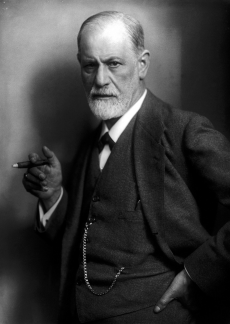
Email: reecejordan98@hotmail.co.uk
Total Article : 168
About Me:18-year-old sixth form student, studying English Literature, History and Government and Politics. My articles will broadly cover topics from the current affairs of politics to reviews of books and albums, as well as adding my own creative pieces, whether it be short fiction or general opinion.

Has literary criticism got a problem with psychoanalytic theory? Well, if you’ve been well factoried through the western education system with regards to English literature you may say no. You would argue that there are various ways in which we can look at a text – through the lens of gender, of sexuality, of race, postmodernism, irony etc. – and that psychoanalysis contributes to such variety in a valid, albeit modern, way.
You may have encountered psychoanalytic theory when perusing through a literary journal, or argument. If you have not, then this is usually the format by which it goes: ‘such and such character can be seen to illustrate such and such’s theory’. This is most heavily prominent with looking at a text through the scope of Freudianism, the theories of Sigmund Freud. For example, one piece of psychoanalytic theory that was drummed into my A-Level class just as recently as a few months ago, was that the characters of Stanley, Blanche and Stella in Tennessee Williams’s play, A Streetcar Named Desire, represent Freud’s three models of personality, the Id, Superego and Ego respectively; Stanley as an animalistic and one-dimensional character, Blanche as more nuanced and rational, and Stella a seeming middle ground between the two. Whilst there is no doubt that there is some parallels between Williams’ work and Freud’s theories, there was always something in me, as we were being taught this, that turned and pricked. It was not until the most recent summer, when I eventually had a chance to brood on the issue outside the omnipresent confines of school life and work that I became aware of the actual flaws of looking at a text in such a way.
The primary reason is that it conflates reality and fiction. The premise of psychoanalysis is to fully understand what it is to be human; to attribute this science onto fiction is to see a novel as merely showing life. It is a very slippery slope if we are to view characters within novels, plays and poetry and real people, and yet, sadly, we see people being turned off of novels for precisely this reason. People will not read novels that use characters, diverse and realistic but not ‘real’, who challenge our morality purely based on its immorality. Novels like A Clockwork Orange or Lolita are not read based on this notion. I remember when my secondary school headteacher once told me that I was ‘too young’ to read Stephen King’s The Green Mile as if I were invited to watch the real augmented goings on at death row. As Vladimir Nabokov states: ‘Literature is fiction. Fiction is fiction.’ Let us not see characters as real people.
To understand why psychoanalytic theory is flawed is also to simply ask the question, ‘what point does it make?’ This is especially prominent with texts that predate the theory attributed to it. If we are to look at a Shakespearean play through the prism of Freudianism what point can we draw out other than Shakespeare had a pre-knowledge of the theory than Freud? The point is tenuous, groundless and adds nothing to our understanding or approach to a text.
Image Credits: wikipedia.co.uk

0 Comment:
Be the first one to comment on this article.